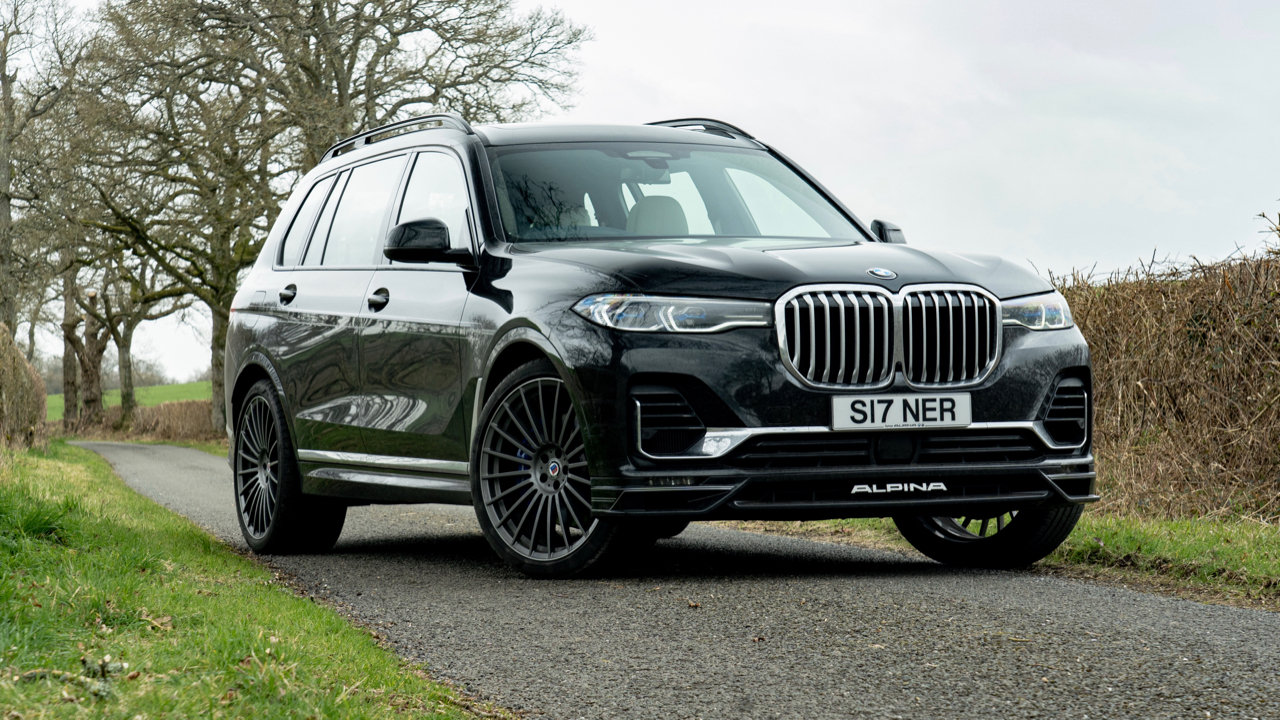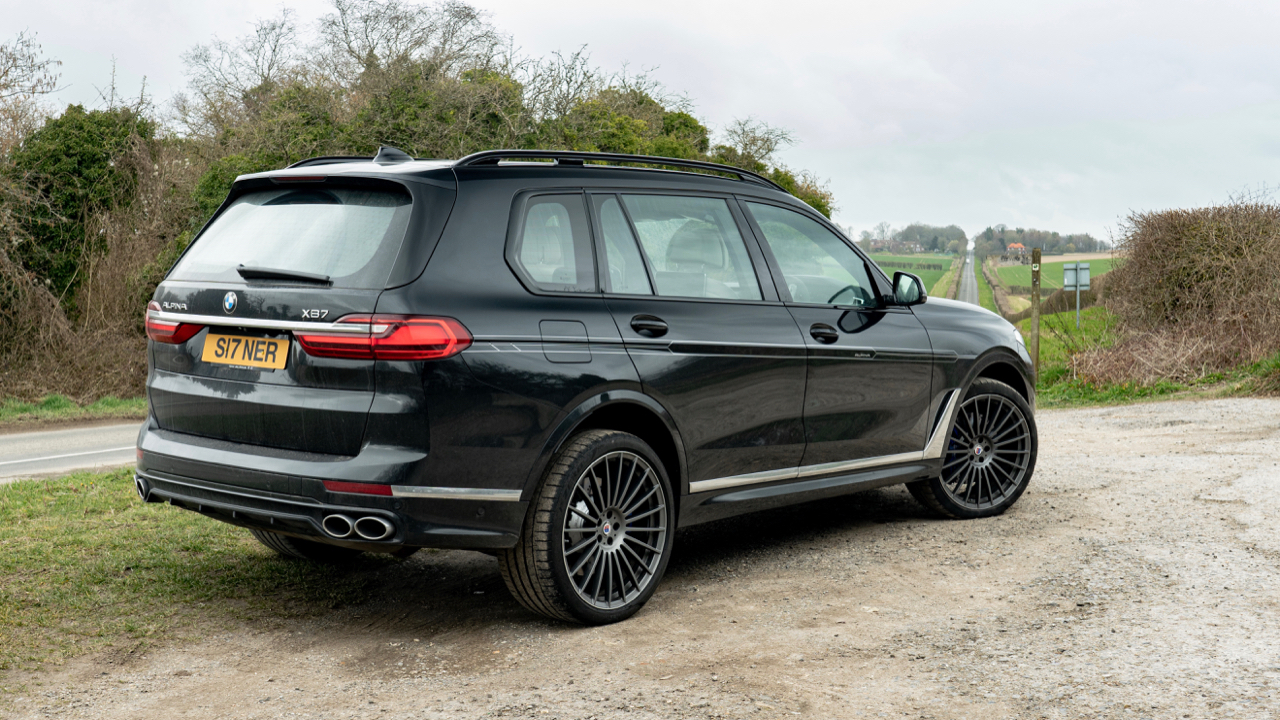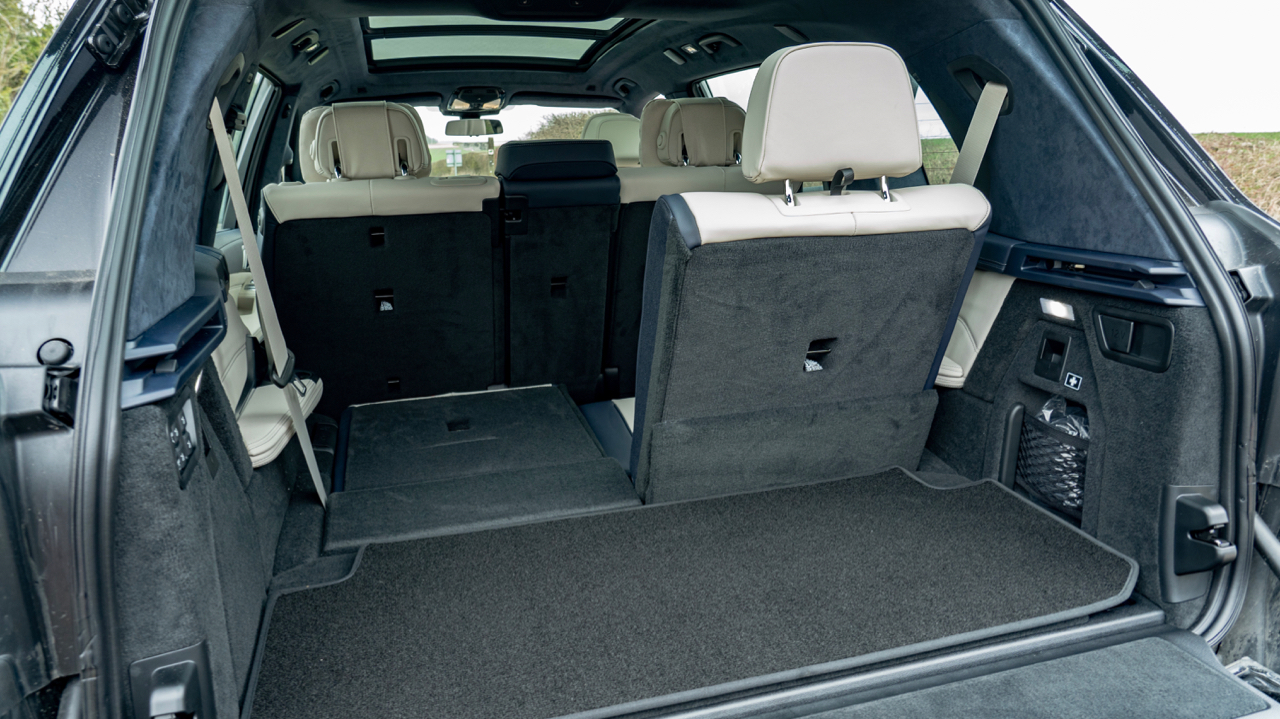
Alpina XB7 review: a 613bhp modified BMW X7
My, that has… presence.
Let’s call it shall we? It’s a gargantuan gargoyle with the pleasing subtlety and cultural finesse of a concrete paving slab. BMW was clearly getting its eye in for the iX EV when it did the hearse-like X7. And I think we have to blame BMW for that rather than Alpina – although the latter hasn’t exactly covered itself in glory here.
No, it’s covered itself in chrome and 23-inch wheels.
It has. And this brings us to the chief point of contention. Alpina is about understatement. It adds a certain visual edge to the models it enhances, but it’s always subtly done. Granted the base material here wasn’t much to work with, but this time round the standard Alpina trimmings don’t so much lightly lift the visuals as further compound the problem.
Slabs of chrome, pin-striping and multi-spoke alloys look a bit daft at this scale.
What goes on behind that *shudders* grille?
The XB7 takes as its base the already is-that-really-appropriate-in-this-day-and-age £96k X7 M50i, with its 4.4-litre 530bhp twin turbo V8 and no hint of any hybrid assistance. It’s a challenging car to love nowadays, but then so are many others – Merc’s GLS, the supercharged Range Rover Sport, the Lamborghini Urus, the Bentayga, Cullinan (there’s a visual partner for the XB7…), even Audi’s SQ8.
Alpina then removes the standard turbos and bolts on a bigger pair, finds space for a pair of additional water coolers, goes through the rest of the engine bay very thoroughly to make sure everything can cope – especially the eight speed auto gearbox, which is fundamentally overhauled – and sends it out the door packing 613bhp and 590lb ft, boosts of 89bhp and 37lb ft over standard.
Bet it doesn’t stop there, though? In fact I bet it doesn’t stop, full stop. If you see what I mean.
I do, so let’s deal with that first. The brakes are utterly mighty. I wouldn’t have thought it was possible to over-spec the brakes for a 2,580kg SUV, but they were so impressive I had to test them. 60-0mph in under 30 metres and under 2.8 seconds puts this on a par with the BMW M5 or Ferrari F8 Tributo. 395mm front discs grabbed by four piston Brembo calipers since you ask. These are the optionally available high performance cross-drilled brakes, though.
Top Gear
Newsletter
Thank you for subscribing to our newsletter. Look out for your regular round-up of news, reviews and offers in your inbox.
Get all the latest news, reviews and exclusives, direct to your inbox.
0-62mph?
That’s done in 4.2secs. 100mph in about 9 and 124mph in under 15. As quick as a Merc-AMG A45S, slightly swifter than a W12 Bentayga, but like the latter the speed feels borderline ludicrous. You’ll soon back off when you notice the fuel economy readout dipping south of 13mpg. The trouble is, you’re not going to get it that much higher. I suppose 20mpg is do-able, but 18 is much more likely if you’re doing days out and so on with the family on-board – which is surely the point of a seven-seat SUV in the first place. Reckon on £100+ fill ups for the 83-litre tank every 280-300 miles (the official claim is 23.5mpg with 274g/km of CO2).
And that’s despite the engine only pulling 1,600rpm at 70mph in top. There’s not much lag to overcome, the turbos just get their heads down and shove all the way to the 6,500rpm limiter. The gearbox is well calibrated, so good at second guessing which ratio you need to be in when, or at least swift at swapping to it. That’s just as well given there are no paddles to pull here, just Alpina’s signature buttons on the back of the steering wheel which are nothing like as satisfying to operate.
What’s it like to drive?
You know what I was saying earlier about the brakes being almost over-specified for the job? Well, so’s the handling. I doubt many owners will even begin to tax the chassis, but once again it’s astonishingly composed and competent. Alpina also enhances the suspension and 4WD system, which includes BMW’s active anti-roll bars. We’ve praised these before for being the dynamic making of performance SUVs, and it’s the same here. The XB7 shouldn’t be able to go around corners remotely as fast as it actually can, and it shouldn’t be able to do so while feeling poised, flat and keen. Yet it does. Stiffen up the dampers and steering first though, or things can be a bit wobbly.
It’s not fun for the feedback or communication you get, but it is amusing if you have a hot hatch or Porsche Cayman following you. It’s the kind of car you send through a section of sweepers, get to the end of and let out an expletive or three while shaking your head.
Not very relevant though, is it?
Not exactly a key SUV attribute I grant you, but since when have unnecessary, unused abilities stopped people buying Uruses and Cayennes? And I promise you that when you just want to loaf with the kids on board, this knocks them flat. The magic ingredient Alpina adds to all its models is ride comfort. And considering this is on the largest wheels the firm has ever fitted to a car, it’s remarkable – aside from a bit of tyre grumble and the occasional shudder when one hits a ridge, that is. Not far off Bentley levels of comfort and noise suppression, though. Standard rims are 21s – the extra sidewall height might give them the added squidge to match the Bentley as well as saving you the best part of £3,500.
So it’s fast, smooth and capable. What’s the drawback?
There are several. Besides the fuel economy and the way it looks. The piano black interior trim is super-reflective, which is distracting, and this theory that the more electric motors in your car, the more luxurious it is needs to stop now. Kids will not wait the hours required for the middle row seat to whirr and tilt electrically forwards – and then only once the front seat has got itself out the way. They’ll stomp their muddy feet over the £4,995 full cream leather cabin as they dive into the first choice back row seat.
But mainly it’s an image thing, and a sense that this is not Alpina at its best. Yes, they’ve managed to add their attributes to an X7, and that’s a fine engineering feat, but Alpina to me is about the dynamic enhancements they bring, the sense of fluency and sophistication. That gives cars such as the B3 and B5 a real role for those that don’t want the aggression of an M3 or M5. But the X7 isn’t a driver-focused product in the first place, so Alpina’s work feels more wasted and unnecessary here, like it hasn’t fundamentally brought anything new to the party.
The other way of looking at it is that my chin-scratching is utterly pointless because look at what Brabus, Mansory et al do to SUVs with their aftermarket work and that seems to keep them in business. Alongside them, the XB7 is a paragon of good taste – not to mention relatively affordable. It costs £125,650, which is a £30k uplift over an X7 M50i. Merc-AMG will sell you a GLS 63 with almost identical power for an almost identical price, which is worth bearing in mind. If you’re into that sort of thing.
Sum it up.
Impressive though it is to drive, I think that plays quite a small role here. This isn’t an aggressive sports SUV in the first place, so Alpina’s ability to finesse the driving is of limited interest. There’s not enough reason to have this over any other X7, and come to think of it, why would you want an X7 in the first place? Alpina is good, but it doesn’t do bodywork so can’t make BMW’s flagship SUV any less of a whale. It impressed me, but I can’t say I warmed to it at all.
Score: 6/10
Featured

Trending this week
- Car Review
BMW iX3






